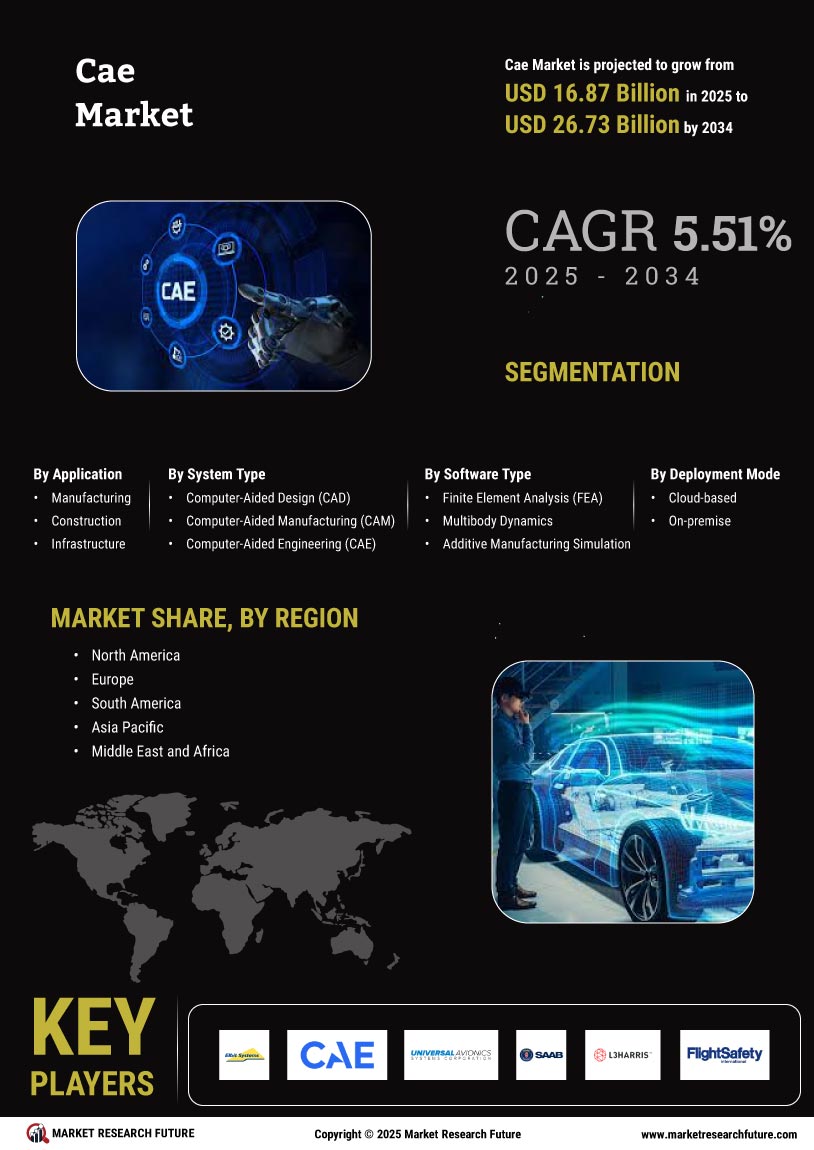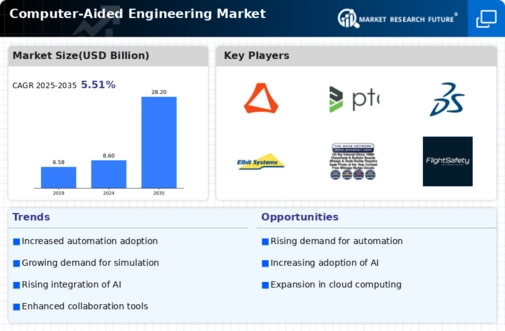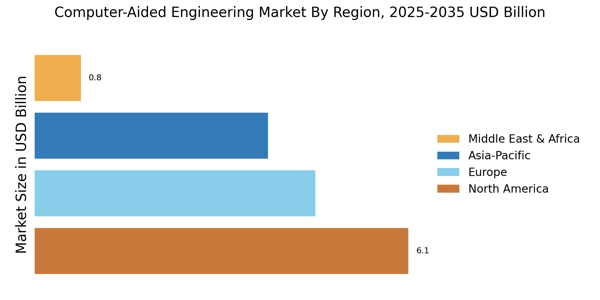Growing Focus on Automation
The growing focus on automation is a key driver in the Computer-Aided Engineering Market. As industries strive to improve efficiency and reduce human error, the adoption of automated design and analysis tools is on the rise. Automation streamlines workflows, allowing engineers to focus on more strategic tasks while software handles repetitive processes. This shift is particularly evident in sectors such as automotive and electronics, where rapid prototyping and testing are essential. The Computer-Aided Engineering Market is expected to expand as companies increasingly recognize the benefits of automation in enhancing productivity and accelerating time-to-market.
Rising Demand for Simulation Tools
The Computer-Aided Engineering Market experiences a notable increase in demand for simulation tools. Industries such as automotive, aerospace, and manufacturing are increasingly adopting these tools to enhance product design and testing processes. The market for simulation software is projected to grow at a compound annual growth rate of approximately 10% over the next five years. This growth is driven by the need for accurate modeling and analysis, which allows companies to reduce development costs and time. As organizations strive for innovation, the integration of advanced simulation tools becomes essential for maintaining competitive advantage. Consequently, the Computer-Aided Engineering Market is likely to witness a surge in investments aimed at developing more sophisticated simulation capabilities.
Advancements in Computational Power
Advancements in computational power significantly influence the Computer-Aided Engineering Market. The continuous evolution of hardware technologies, such as multi-core processors and high-performance computing systems, enables engineers to perform complex simulations and analyses more efficiently. This increase in computational capabilities allows for the handling of larger datasets and more intricate models, which is crucial for industries like aerospace and energy. As a result, organizations are increasingly investing in high-performance computing solutions to leverage these advancements. The Computer-Aided Engineering Market is expected to benefit from this trend, as enhanced computational power facilitates faster design iterations and improved product performance.
Regulatory Compliance and Standards
Regulatory compliance and adherence to industry standards are critical factors influencing the Computer-Aided Engineering Market. As industries face increasing scrutiny regarding safety, quality, and environmental impact, the demand for engineering solutions that ensure compliance is rising. Companies are investing in computer-aided engineering tools that facilitate compliance with regulations, such as ISO standards and environmental guidelines. This trend is particularly pronounced in sectors like aerospace and automotive, where safety and quality are paramount. The Computer-Aided Engineering Market is likely to grow as organizations prioritize compliance-driven engineering practices to mitigate risks and enhance their market reputation.
Integration of Internet of Things (IoT)
The integration of Internet of Things (IoT) technologies is reshaping the Computer-Aided Engineering Market. IoT enables real-time data collection and analysis, which enhances the design and testing processes in various sectors, including manufacturing and construction. By connecting devices and systems, engineers can monitor performance and make data-driven decisions throughout the product lifecycle. This connectivity not only improves efficiency but also fosters innovation in product development. The Computer-Aided Engineering Market is likely to see increased adoption of IoT-enabled solutions, as organizations seek to optimize their operations and enhance product quality through real-time insights.


















Leave a Comment